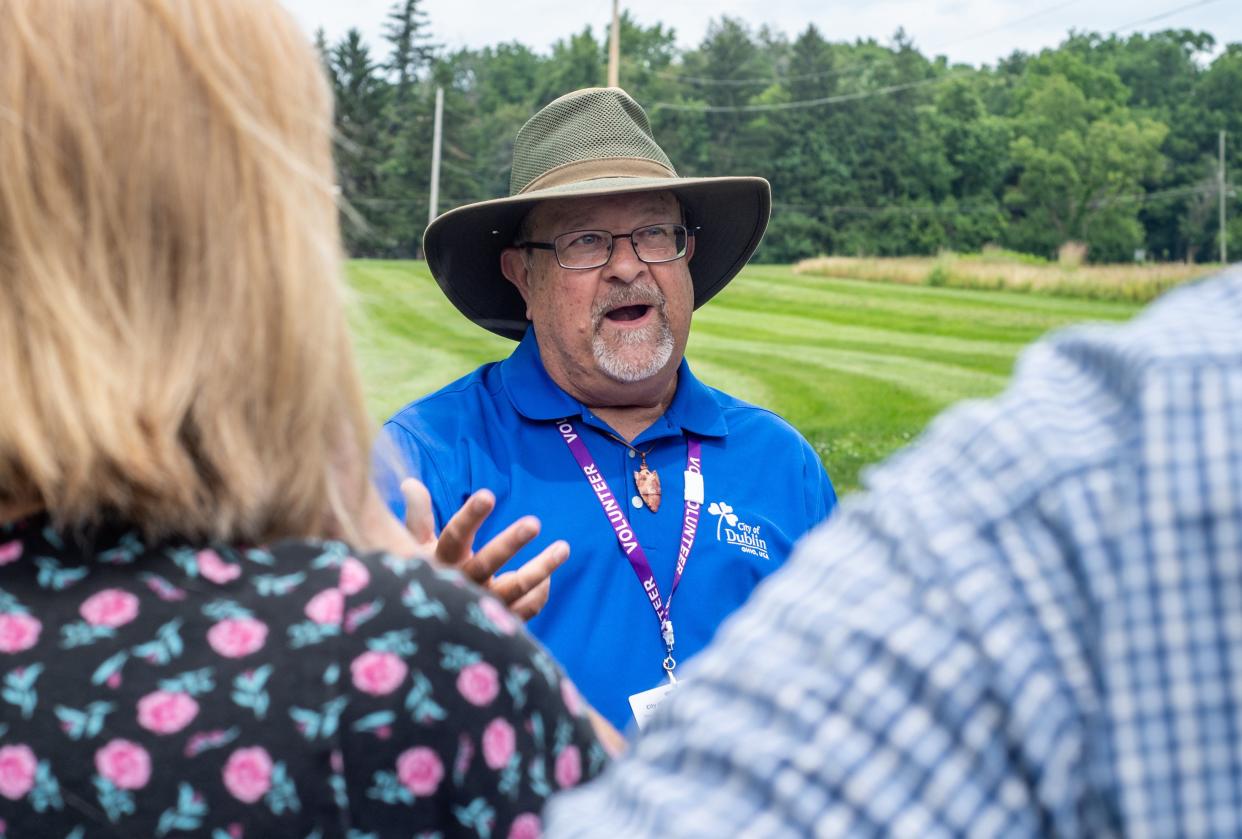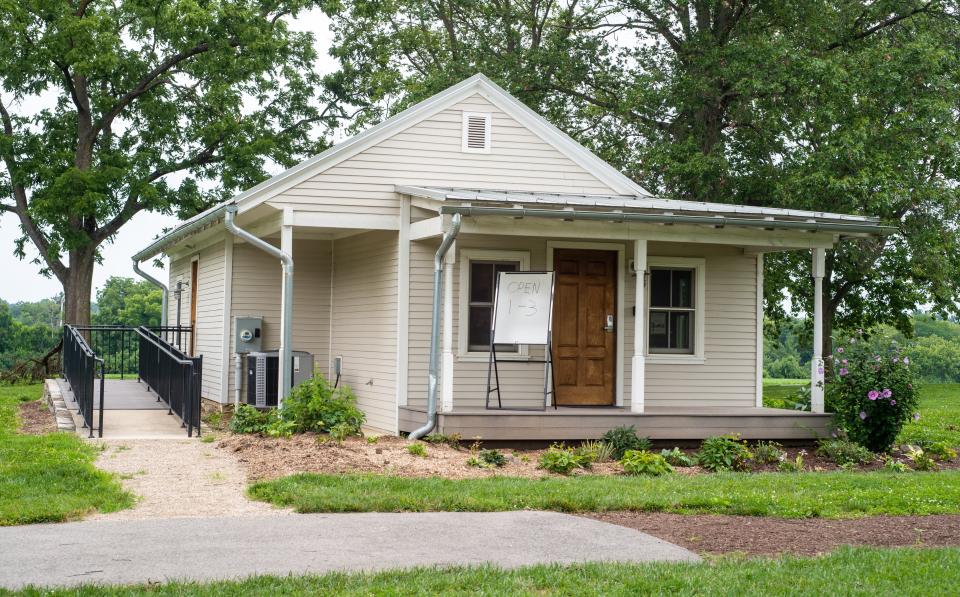Dublin's history is showcased at Ferris-Wright Park

- Oops!Something went wrong.Please try again later.
Dublin is showcasing its rich history with the help of a team of 12 Dublin Heritage Interpreters.
Different interpreters are to staff Ferris-Wright Park & Earthworks, 4400 Emerald Pkwy., providing tours during open-house events.
“The goal is to celebrate the richness of Dublin’s history and share it,” particularly that of Ferris-Wright Park & Earthworks, said Christine Nardecchia, director of outreach and engagement for Dublin.
The city purchased what is today the 18-acre park in 2018 from the descendants of the family that owned it for more than 200 years.
The park was dedicated last year.
The land within Ferris-Wright Park & Earthworks is believed to have been used centuries ago by indigenous peoples who used it for ceremonial purposes.
Carl Gleditsch, 65, who lives adjacent to the park, is one of the 12 Dublin Heritage Interpreters.
He shared the history of the land July 24 to those attending the first weather-delayed open house at the park.
“We are working out an August schedule with interpreters,” Nardecchia said July 27.
The schedule is to be posted at dublinohiousa.gov.
The team of Dublin Heritage Interpreters trained since April to learn the history of the land and prepare for speaking to the public at the open houses.
“Volunteers in this program are citizens who have a passion for history, nature and sharing knowledge with others. Heritage Interpreters complete a rigorous multi-level training series comprised of online learning modules and in-person workshops. This group of highly skilled volunteers looks forward to begin welcoming school groups and park goers (in the future),” said Shirley Blaine, a public information officer for Dublin.
The land on which the park sits is believed to have been used by indigenous peoples for ceremonies, such as weddings and funerals and other celebratory or mourning purposes, according to Gleditsch.
The site at the park has never been fully excavated and it is not known if there are interments, but bone fragments have been found on the site in the past, said Tom Holton, past president of the Dublin Historical Society.
At about the turn of the 19th century, a man named John Sells traveled from Kentucky to accept land near the Scioto River. He purchased it from an agent, James Holt, who had received the land for his service in the Colonial Army of Virginia in the American Revolutionary War.
The Sells family intended to develop the expanse of land as “Sellstown,” but after hiring a man named John Shields to survey, Shields, who was from Ireland, named the area “Dublin,” according to Gleditsch.
Shortly after the War of 1812, a man named Joseph Smith, also from Kentucky, bought land in the area.
Smith’s daughter, Sarah, married a man named Joe Ferris, who built as a wedding gift what is believed to be the first frame house, as opposed to a log cabin, which is the house that stands today at Ferris-Wright Park, Gleditsch said.

During this time period, William Sells, John Sells' brother, became acquainted with Leatherlips, a Wyandot Native American who was executed in 1810.
Sells attempted but failed to prevent his execution at the hands of Roundhead, who like Leatherlips, was a Wynadot chief. There are accounts, but no conclusive proof that the two were brothers, according to Holton.
Another Wyandot chief ordered the execution of Leatherlips for refusing to join the alliance of Tecumseh against the U.S. Army and the further spread of White settlement, according to Holton.
A monument to Leatherlips is at Scioto Park, just north of Ferris-Wright Park.
At some point, a Ferris married a Wright, lending to the park’s two names today.
“I have always been interested in history and being an interpreter is a way to give back to the community,” Gleditsch said.
Among those learning from Gleditsch was Jeff Patzke and his wife who reside near the village of Ashley, in northern Delaware County.
“This kind of history is interesting; we love this kind of stuff,” Patzke said.
kcorvo@thisweeknews.com
@ThisWeekCorvo
This article originally appeared on ThisWeek: Dublin's history is showcased at Ferris-Wright Park

